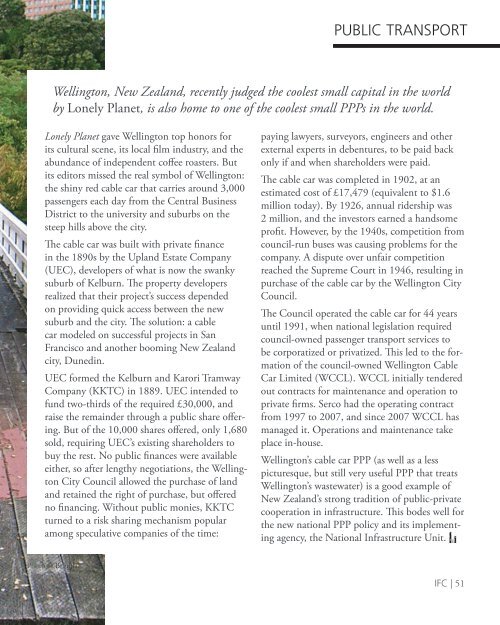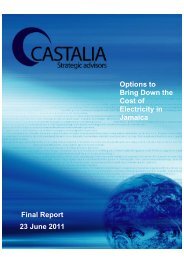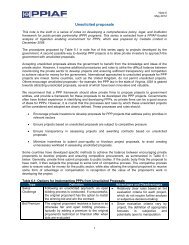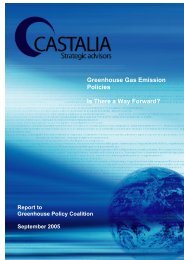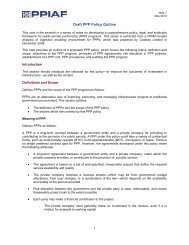WELLINGTON: - Castalia
WELLINGTON: - Castalia
WELLINGTON: - Castalia
You also want an ePaper? Increase the reach of your titles
YUMPU automatically turns print PDFs into web optimized ePapers that Google loves.
Lonely Planet gave Wellington top honors for<br />
its cultural scene, its local film industry, and the<br />
abundance of independent coffee roasters. But<br />
its editors missed the real symbol of Wellington:<br />
the shiny red cable car that carries around 3,000<br />
passengers each day from the Central Business<br />
District to the university and suburbs on the<br />
steep hills above the city.<br />
The cable car was built with private finance<br />
in the 1890s by the Upland Estate Company<br />
(UEC), developers of what is now the swanky<br />
suburb of Kelburn. The property developers<br />
realized that their project’s success depended<br />
on providing quick access between the new<br />
suburb and the city. The solution: a cable<br />
car modeled on successful projects in San<br />
Francisco and another booming New Zealand<br />
city, Dunedin.<br />
UEC formed the Kelburn and Karori Tramway<br />
Company (KKTC) in 1889. UEC intended to<br />
fund two-thirds of the required £30,000, and<br />
raise the remainder through a public share offering.<br />
But of the 10,000 shares offered, only 1,680<br />
sold, requiring UEC’s existing shareholders to<br />
buy the rest. No public finances were available<br />
either, so after lengthy negotiations, the Wellington<br />
City Council allowed the purchase of land<br />
and retained the right of purchase, but offered<br />
no financing. Without public monies, KKTC<br />
turned to a risk sharing mechanism popular<br />
among speculative companies of the time:<br />
PUBLIC TRANSPORT<br />
Wellington, New Zealand, recently judged the coolest small capital in the world<br />
by Lonely Planet, is also home to one of the coolest small PPPs in the world.<br />
Photo © Br3nda<br />
paying lawyers, surveyors, engineers and other<br />
external experts in debentures, to be paid back<br />
only if and when shareholders were paid.<br />
The cable car was completed in 1902, at an<br />
estimated cost of £17,479 (equivalent to $1.6<br />
million today). By 1926, annual ridership was<br />
2 million, and the investors earned a handsome<br />
profit. However, by the 1940s, competition from<br />
council-run buses was causing problems for the<br />
company. A dispute over unfair competition<br />
reached the Supreme Court in 1946, resulting in<br />
purchase of the cable car by the Wellington City<br />
Council.<br />
The Council operated the cable car for 44 years<br />
until 1991, when national legislation required<br />
council-owned passenger transport services to<br />
be corporatized or privatized. This led to the formation<br />
of the council-owned Wellington Cable<br />
Car Limited (WCCL). WCCL initially tendered<br />
out contracts for maintenance and operation to<br />
private firms. Serco had the operating contract<br />
from 1997 to 2007, and since 2007 WCCL has<br />
managed it. Operations and maintenance take<br />
place in-house.<br />
Wellington’s cable car PPP (as well as a less<br />
picturesque, but still very useful PPP that treats<br />
Wellington’s wastewater) is a good example of<br />
New Zealand’s strong tradition of public-private<br />
cooperation in infrastructure. This bodes well for<br />
the new national PPP policy and its implementing<br />
agency, the National Infrastructure Unit.<br />
IFC | 51


